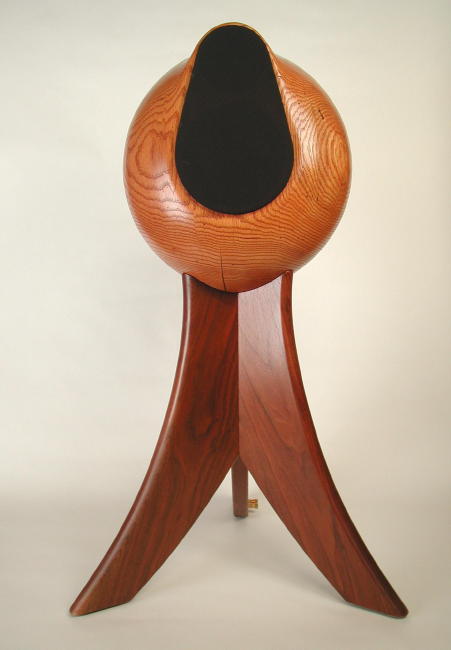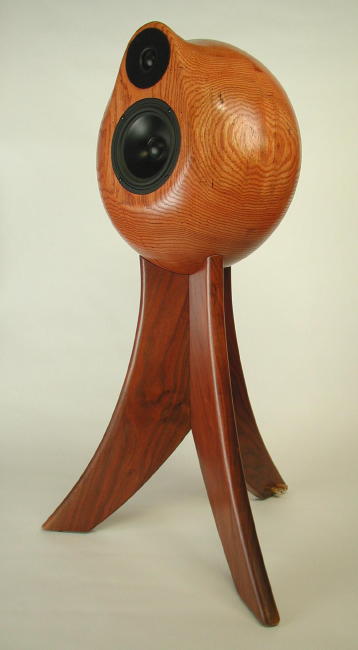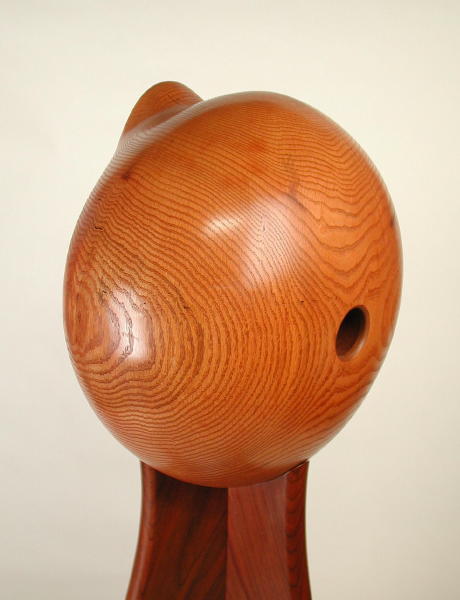|
|
||||||||||||||||||
|
Coration Spherical Speakers These functional sculptures represent unique engineering and artistry, and offer the highest quality in sound reproduction. They are made by a father and a son team in Crozet, Virginia. Fred and Nathan Williamson collaborated in both design and execution. The red oak came from a lightening strike on our driveway, and is stained a golden maple. Nathan worked with electronic for years, and selected the components as well as made the crossovers.
Each speaker begins as a two-hundred-pound section of a log that is hand turned on a lathe, then carved to the final complex shape. Because each log is different, each speaker must be individually tuned. Each set of matched speakers has its own unique sound. A Brief Technical Explanation: The sphere has long been known as the ideal shape for speaker enclosures because it minimizes standing-wave modes (internal resonances), and allows sound pressure originating from the drivers to radiate uniformly, greatly increasing stereo imaging. In box type enclosures, internal standing-wave modes induce vibrations in the walls, which radiate sound pressure. This unwanted noise noticeably clutters the tonal quality of the speaker. Because a spherical surface is much more rigid than a plane, wall vibrations are greatly minimized in spherical enclosures. The spherical design of these enclosures allows the crucial horizontal and vertical dispersion patterns to arrive at the listener with the same spectral balance as the on-axis sound, providing outstanding stereo imaging and spectral purity. The flared port on the rear of the enclosure provides taut bass with an absence of port noise. In addition, because the sphere minimizes cabinet diffraction, the tweeter can reproduce difficult musical passages with equally low distortion. |
||||||||||||||||||
|
This view from the side shows the drivers without the grill, and the electrical connectors on the real leg, with wiring hidden within the leg.
|
||||||||||||||||||
|
Here is a close up of the front. You can see how carefully the base is fitted to the speaker globe. A light colonial maple stain brings out the oak grain.
|
||||||||||||||||||
|
From the back you can see the sculptured shape of the tweeter enclosure, and the walnut-lined tuned ported bass vent.
|
||||||||||||||||||
These speakers deliver clean, accurate sound, projecting a remarkably large stereo image in the area between them. That is, you can walk about left to right and still hear the stereo effect very clearly. I have one pair left.



